Bob Dylan – folk hero to thousands if not millions –
caused a furor when he appeared at the 1965 Newport Folk Festival
with … an electric guitar!
If you read about the incident you’ll discover that there was a
mammoth sense of betrayal within the folk-centric fold. How
could their hero embrace rock music?
I thought about this musical misstep / milestone when I first read
Stephen Few’s rant over Tableau “veering from the path” for
allowing two unworthy visualization types and one unworthy
visualization implementation to sully Tableau’s latest release (see
http://www.perceptualedge.com/blog/?p=1532).
Ironically, I was saddened and disappointed — betrayed is too
strong a word — by Few himself over his recent dashboard design
competition (see
http://www.datarevelations.com/stephen-fews-dashboard-design-competition.html).
But let’s not dwell on that just now.
With respect to Tableau 8, While Few acknowledges that “this
version of the software includes many worthwhile and well-designed
features” he maintains that Tableau’s introduction of
visualization types that are “analytically impoverished” is an
indication that the company’s “vision has become blurred.”
This is a grossly unfair assessment as while there may be some
aspects to the release that leave me shaking my head, the vast
majority of features show crystal-clear vision and laser-guided
direction.
Indeed, as someone who uses Tableau every day of every week, I
think version 8 is a godsend as the productivity improvements for me,
my clients, and my students will be huge. Yes, there are some things
in the product that are half-baked – and goodness knows we’re not
used to seeing anything half-baked from Tableau. But
for Few to write 6,000-plus words condemning the release while barely
acknowledging the incredible advancements seems grossly unjustified.
So, let’s plug in the 1965 Fender Stratocaster and have a
listen, shall we?
Acknowledging that which is Half Baked
I’ll start off by acknowledging some of the things that I think
are half-baked:
- Bubble charts have an algorithm
flaw, and size and placement cannot be controlled
- Forecasting is under-documented
and does not inspire confidence
- Treemaps are flawed
- Multiple Value (Dropdown) filters needs an “apply” button
Bubble Charts
I have no problem with Tableau including this chart type, even
though I don’t know if I will every use this viz type in a
production environment.
I might, however, use this to help me get a visceral feel for the
data. That is, I rather like the “gestalt” appreciation I
get from looking at a bubble chart.
My two problems with Tableau’s implementation is that it’s too
much of a “black box” (i.e., I cannot control size and placement)
and that you run into bubble sizing problems if you attempt to
display both very large and very small values.
Consider the visualization below that I created for my recent
“Infographics
Behaving Badly” post.

* A visually-compelling, but
analytically-flawed bubble chart. *
As Joe Mako noted, the bubble for The Diary of Anne Frank
is the same size as the bubble for The Lord of The Rings
even though sales of the latter are almost four times greater than
the former.
Apparently, the smallest bubble Tableau will draw is 1/25th
the size of the largest bubble. Rumor has it that this
shortcoming will be addressed in a forthcoming bug fix release.
Forecasting
I’ve spent several hours experimenting with this feature and
I’ve come to the conclusion that I’m better off creating the
forecast using an algorithm that I can control.
Don’t’ get me wrong, I would love to be wrong about this and
find out that this feature is deep and rich, but based on my
experience it smacks of first iteration,
“good-enough-to-get-a-check-mark-on-a-comparison-chart” quality.

* Default forecasting results do not
inspire a lot of confidence. *

* Results when you take into
consideration trend and season. *
Treemaps
Few’s comments on the shortcomings in Treemaps are spot on, I’m
just not terribly upset about it as we never had treemaps before.
While the implementation is flawed, it’s still useful.
But yes, I hope Tableau makes this better down the road, as per
Few’s recommendations.
Multiple Value (Dropdown) Quick Filter
I’ve wanted this feature for several years as the standard
multi-select filters take up A LOT of screen real estate, as shown
here.

* A check-all-that-apply quick filter.
*
So, I’m delighted that this functionality can now be neatly
packed in a compact dropdown list box.

* A compact check-all-that-apply quick
filter. *
One problem still persists with check-all-that-apply filters and
that is Tableau’s insistence on redrawing the visualization after
every click. For some projects it can take several seconds for
Tableau to re-render the viz. Users lose patience with this
type of behavior.
I believe that Tableau did have an Apply button in the works that
would have addressed this problem but they ran into some stability
issues and elected to postpone implementing this feature.
I hope to see it soon.
What About Word Clouds?
I don’t mind that Tableau gives people a way to create these
things even though I think they are an analytically-flawed way to
present information (although they can pack more of an emotional
wallop than a bar chart).
A major problem with word clouds occurs when your data contains
different terms that describe the same or similar sentiment. Consider
the word cloud shown below that shows survey responses to the
question “what is your mood right now?”

* Are the majority of people happy? *
One might think that most respondents
were happy, but look what happens if we “linguistically normalize”
the terms that are synonyms of “sad”:

* … or
are more people sad than happy? *
It turns out that more people are in fact sad.
Note: There are products that are capable of
parsing full sentences and are able to “disambiguate” and then
normalize terms under umbrella concepts (although I have yet to see
the functionality in any word cloud generators).
Acknowledging that which is Fully Baked
I could probably write 6,000-plus words on all the new features
that wow me in version 8, but I’ll just focus on five that will
allow me to produce better work faster:
- Applying filters to selected
sheets (this is just brilliant)
- Enhanced set functionality
- Floating / free-form dashboard
elements
- Enhanced marks card (and in
particular multiple text entries)
- Improved data blending
- Bonus item – Tableau’s incredible responsiveness during
the beta
Applying Filters to Selected Sheets
I’ve been pining for this since version 4 and while it has taken
Tableau more years than I would have liked to see this realized, the
implementation is beautifully rendered.
Tableau exceeded my expectations here as in making my case for
this feature I just wanted to see the following three filter options
available to me:
- All worksheets in the workbook
- Just this worksheet
- All worksheets in this dashboard
But as with so many other beautifully-crafted features in the
product (including the “add reference lines” dialog box, which
one needs to implement Few’s own bullet charts), Tableau developed
a more generalized and elegant approach for controlling filter scope,
as seen in the following menu sequence and dialog box.

*Start by indicating you want to
control the scope…*

*… then apply the filter to selected
sheets.*
Do you hear that? That’s a choir of imaginary angels singing
“ahhhhhh”.
Enhanced Set functionality
The new IN / OUT set functionality is a huge addition and the
ability to combine sets is beautifully rendered as shown in this
dialog box.

*Holy Venn diagram, Batman!*
Work like this is hardly an indication of blurred vision.
Floating / free-form dashboard elements
With past versions of Tableau I’ve spent a lot of time fighting
with Tableau’s dashboard layout constraints. Indeed, I would spend
hours sparring with Tableau to place visualizations, quick filters,
legends, and so on, into a too-cramped-for-all-the-elements-I-want
space.
With the latest release there will be a lot less fighting as any
and all objects can now be floating elements, so I can easily place
objects on top of other objects.
While this may not seem like a big deal, the ability to place
legends and filters atop a visualization (vs. locking these items
into a designated corner) makes for more efficient use of space and a
much slicker looking dashboard.

*In this example, floating elements buy
me 80 to 100 pixels.*
Here’s how I would have presented this in the previous release:

*Having to put filters and legends in a
designated area means less room for the visualization itself.*
Enhanced marks card (and in particular multiple
text entries)
I never had a problem with tableau’s “shelf” concept for
controlling text, color, size, and so on, but the new “button”
concept and attendant marks card implementation are well-designed and
will make my life easier, both as a developer and as someone that
trains others.

*Tableau’s new marks card.*
But there’s more to this than just a
slicker user interface. By moving away from the
one-item-at-a-time-on-a-shelf approach you can now have multiple
items controlling facets of the visualization. Having multiple
text items in play is particularly useful, as shown here.

*It’s now a snap to display both
count and percentage by placing multiple text elements on the text
marks card. I’m also using the floating elements feature to put the
title and explanatory text within the viz itself.*
Improved data blending
There are a handful of technologies that never cease to amaze me.
WiFi certainly falls into this category. Even though I’ve
used it thousands of times, I’m always enthralled that I can be
sitting in a coffee shop, airport lounge, or family room and I can
connect to the Internet.
I have the same reaction to trade show pop-up display booths.
I’ve set these things up dozens of times and I’m blown away every
time I see the little compact frame expand to ten times its packed
size.
I have the same reaction tor Tableau’s data blending
capability. That I can easily – and I mean really easily –
get data from one source (e.g., SQL server) to play nicely with data
from another source (e.g., Microsoft Excel) without having to think
very hard never fails to amaze me.
There had been a major shortcoming in previous releases and that
was that the field that linked the two sources had to “be in play”;
i.e., either the field was visible or it had to be placed on the
level of detail shelf.
This is no longer the case with Tableau 8 so this capability that
was so amazing in previous versions is now even more amazing.
Bonus item – Tableau’s incredible
responsiveness during the beta
I’ll confess that I thought the various beta builds for version
8 were quite buggy – significantly buggier than with previous
versions of Tableau. To be fair, betas from previous releases were
insanely stable and beta builds in V8 were no buggier than betas from
companies like Microsoft.
Still, having worked with betas going back to 2006, I wasn’t
used to stuff not working right.
But I never had much time to worry as Tableaus responsiveness to
my bug reports allayed all my fears. Indeed, their rapid
response and genuine concern for my concerns showed great customer
focus.
Particular praise should go to Francois Ajenstat whose
attentiveness was second-to-none. Our community is lucky to have him
as such a stalwart user advocate.
Parting thoughts
While I disagree with the one-sidedness of Few’s critique, I’m
profoundly grateful that he did express his dismay as given his
reputation – well deserved, I might add – I suspect we’ll see
Tableau attend to the itemized shortcomings sooner rather than later.
Also, it is posts like Few’s – and the attendant replies and
follow-up posts, including this one – that produce better products
and services. Indeed, it is through this open discussion that
we spread our collective knowledge and expertise, and improve the
state of the art.
Let’s keep the passion going..
Disclosure: I am a real user, and this review is based on my own experience and opinions.






















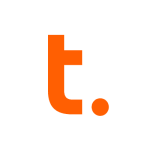



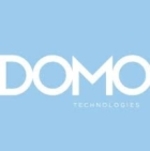

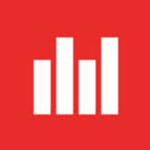

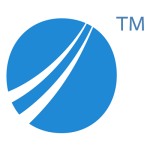
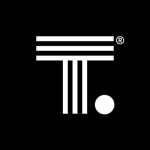



I dont know why tableau 8 is so criticized. Am no visualization expert like Few but can say for sure that Tableau still has much better Visualizations than IBMs, Microsoft's,BO's or MicroStrategy's.
There is something with version 8 that makes people criticize, same thing happened with Cognos 8 and MicroStrategy 8 ..both versions later went on to define what these tools are..Hope same continues for Tableau.
And i dont hate or like any visualizations, if my user says he wants bubble chart and i feel it satisfies the need then i will use it, regardless of what Few says.